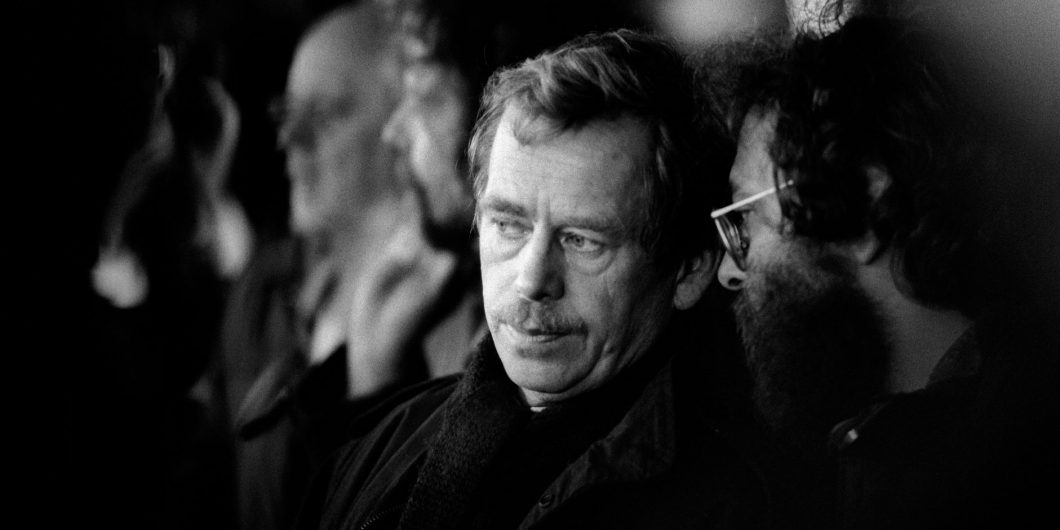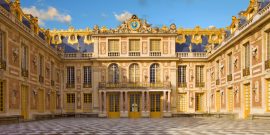Nationalism and the Spirit of 1989
When asked about the significance of the French Revolution, the Chinese premier Zhou Enlai was alleged to have quipped, “it was too soon to tell.” But thirty years after the end of the communist regimes of East Central Europe, Professor Mahoney has made a bold effort to take stock of the Revolution of 1989. And indeed, thirty years of distance has made possible the formulation of some tentative conclusions about the events of that incredible year. One kind of analysis that this distance makes possible is an evaluation of whether the current socio-political arrangements in the region are reflections of the “Spirit of 1989,” or whether they represent a departure from the values that animated the events of that year (and indeed, the following two years as well).
Professor Mahoney argues forcefully for the former point of view. According to him, the Revolution of 1989 represented, first and foremost, a rejection of “Ideology” (especially utopian ideology) and a reassertion of “Truth,” especially the fundamental truth of the Nation. Thus, the current regimes, for example, of Viktor Orbán’s FIDESZ in Hungary or of the Party of Law and Justice in Poland, are indeed the true heirs of the Revolution and its motivating values.
Professor Mahoney is absolutely correct that some of the ideas, sentiments, and beliefs of the current ruling parties in Hungary and Poland (for example), especially nationalism, were certainly very important in the events in 1989. Yet, nationalism and its related culturally conservative impulses that Professor Mahoney so vigorously champions in fact occupied an ambiguous and ambivalent place in the intellectual architecture of the revolutions of that year.[1]
Along the way, Professor Mahoney argues that the revolutions of 1989 were non-ideological, perhaps even anti-ideological. Here again he is on well-trodden intellectual ground. Some scholars have wondered whether they should be called revolutions at all. Timothy Garton Ash famously coined the term “Refolution,” which he hoped would capture the gradualist, reformist spirit of these (generally) non-violent “revolutions.” Instead of ideology, there were broad ideas and generalized talk about “free markets,” “civil society,” “democracy,” “dignity,” “national independence” and so on. The closest that the revolutionaries came to slogans like “Liberty, Equality, Fraternity!” (or, for that matter “Workers of the World Unite!”) were calls for “Return to Europe” or “Return to Normalcy.” The revolutions (or “refolutions”) were thus based, implicitly or explicitly, on a kind of backward-looking, nostalgic program. Rather than the typical revolutionary narrative of utopia (or at least “Progress”), the revolutionary impulse of 1989 was aimed at recapturing some lost past, or somehow turning back the clock.
But if the watchword of the revolutions was “return,” to which date was the calendar to be reset? Which of the various historical pasts were the beacons for the anti-communists of 1989? As Vladimir Tismaneanu, among others, has pointed out, “the struggle with legacies of the past is the hallmark of the post-communist condition.” The past offers not only liberal, individualistic, and cosmopolitan episodes, but authoritarian, collectivist, and nationalist ones too. Václav Havel, in 1991, wrote that postcommunism is “a long forgotten history coming back to haunt us, a history full of thousands of economic, social, ethical, territorial, cultural, and political problems that remained latent and under the surface of totalitarian boredom.” Is the “normal” condition to which the revolutionaries of 1989 sought to return poisoned by this “long forgotten history”?
Havel, a character to whom Professor Mahoney quite rightly devotes considerable attention, personifies many of the idiosyncrasies of the revolutions of 1989, while at the same time belying his suggestion that the revolutions were at their core manifestations of a nationalistic cultural conservatism. As Professor Mahoney reminds us, Havel’s central philosophical preoccupation was with “Truth,” and his recognition of the utter dishonesty of communism was fundamental to his entire political project. Professor Mahoney is certainly correct to argue that Havel was no post-modern relativist. And, in fact, some of the Truths championed by Havel indeed involved reclaiming truths about the Czech and Slovak nations and their histories that the Communist Party had so brutally distorted. On the other hand, another of Havel’s mottos, at least as important as “Living in Truth,” was “věc česká věc lidská” (“The Czech concern is the human concern”) coined originally by T.G. Masaryk, president of the first Czechoslovakian republic. This statement expresses the essential cosmopolitanism of Havel’s national identity, linking the aspirations of the Czechs to broader truths about humanity in general.
Professor Mahoney is absolutely correct that the general trend for the past several years in the political discourse of East Central Europe is toward some kind of nationalistic culturally conservative populism. But rather than being rooted in the Revolutions of 1989, these movements seem broadly reflective of what some perceive as a general crisis in liberalism, or even with the Enlightenment project as a whole. According to these narratives, the fall of communism plunged the world into an unexpected ideological vacuum. Ironically, the fall of communism weakened the liberal democracies instead of strengthening them.
As long ago as 2007, for example, Ivan Krastev linked a gloomy assessment of the future of liberal democracy in East Central Europe and the former Union of Soviet Socialist Republics to a story of an embattled global (or at least European) liberalism, what he calls the “strange death of the liberal consensus.” According to Krastev, there is a growing tension in Europe
between the liberal rationalism embodied by EU institutions and the populist revolt against the unaccountability of the elites. Liberal elites fear that modern societies are becoming ungovernable. Populists fear that modern elites have become totally unaccountable. Both fears are legitimate.”
Tismaneanu likewise argues that the postcommunist era dawned “against a background of a universal disparagement of conventional political dichotomies, including a widespread crisis of self-confidence on the part of Western liberalism.” Echoing Krastev’s fear of a populist revanchism, Tismaneanu further cautions that the tensions in the postcommunist world are a “catalyst for revival of conflict between liberal individualism/nationalist collectivism.”
It does indeed seem that, faced with the awesome task of building “a new world on the ruins of communism,” liberalism is somehow paralyzed. The abject and total failure of communism and the disintegration of the communist regimes did not, contrary to many expectations, lead to the “End of History” and/or the triumph of liberalism. Three decades into the postcommunist epoch, liberalism’s key elements—e.g., free markets and constitutional democracy—are everywhere being questioned and criticized. The economic crisis beginning in 2008 seems to have shaken what turns out in retrospect to have been a fairly casual devotion on the part of many people to such ideas.
All over the globe, one sees calls for more government involvement in the economy, along with a growing distrust of established political parties and with government in general. These sentiments are mixed with an increasingly vociferous, if incoherent, aggressive populism. There seems to be, in other words, a sense that the liberal order is “broken.” Everywhere the talk is of threats to the national culture, on the one hand, and the need for increased economic regulation and trade controls to manage the otherwise voracious appetites of “speculators” and the “excesses” of the free market on the other.
The famous Polish dissident Adam Michnik recognized as early as 1991 the ambiguous, indeed dangerous, challenge posed by nationalism for his newly free democratic republic. He noted that there is a tension in Poland between:
two ideas of nation and state: between the idea of a civil society and an open nation on the one hand and, on the other, the idea of a ‘Catholic State of the Polish Nation’ and intolerance toward those who are different. The former uses the language of democratic debate; the latter the language of insinuation and hatred. For the former, the nation is a community of culture; for the latter a community of blood.
If the current regimes in places like Hungary and Poland do indeed represent the “Spirit of 1989,” as Professor Mahoney seems to suggest, they are representative of only one of the many aspects of the revolutionary spirit of that remarkable year.
[1] For a longer piece outlining my views on nationalism in 1989, see Peter C. Mentzel, “Nationalism, civil society, and the revolution of 1989,” Nations and Nationalism, XVIII, 4, October 2012, 624-642

